Written & Photographed by Koa Kalish
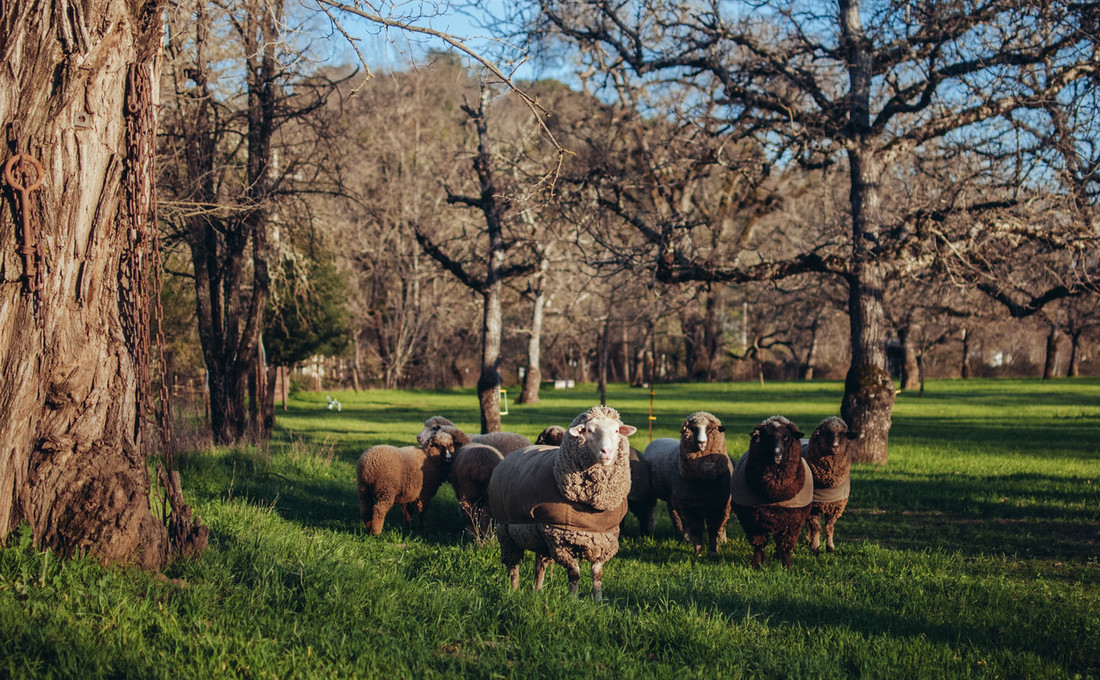
I meet Carrie and John outside of their farmhouse at the base of Kirabo Pastures: 250 acres of rolling hills and valleys in Witter Springs, Lake County. The spring air is fresh and hot, and they invite me to walk around the grounds with them. We first enter the barn and, tiptoeing quietly, we pass a newborn lamb suckling on his resting mother. Exiting the barn door to the right, we encounter three handsome rams; and as the gate opens out to the pasture we enter into a field of giant oak trees where 41 more merino mothers and their babies graze happily in the late afternoon sun.
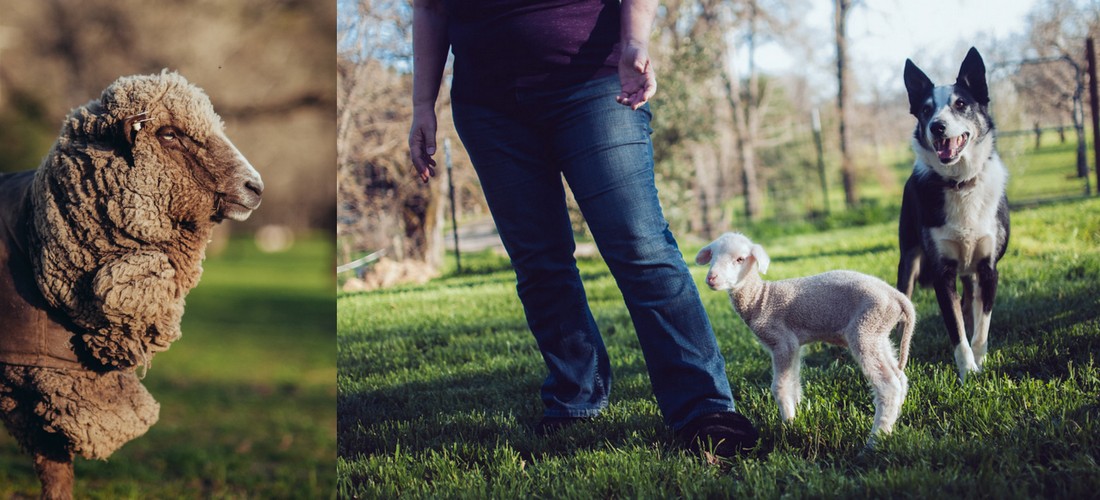
I was told that this was the land of the “Legendary Merinos.” Carrie and John have been shepherding these animals for the last three years, but the sheep themselves were a long-standing gift from John’s mother, Jean Near. In the 1940’s Jean’s father raised sheep in the neighboring Potter Valley. Unlike everyone else who only desired white sheep for white fleeces, Jean wanted black sheep, brown sheep — all colored sheep. She was a revolutionary for her time and still is. At 102 years old, she still lives on her own with ten of her multi-colored merinos in Redwood Valley. Jean didn’t begin raising merinos until she was in her early 60s after a career as a teacher at Ukiah High School. She was originally gifted some colored wool sheep for grass control, and through breeding and help from Martin Dally at the UC Hopland field station she gradually bred to merino and perfected the fineness of her wool. She gifted many of the offspring to John and Carrie who now raise and tend to them in Witter Springs. It has become a family tradition, and a legendary one, to be sure.
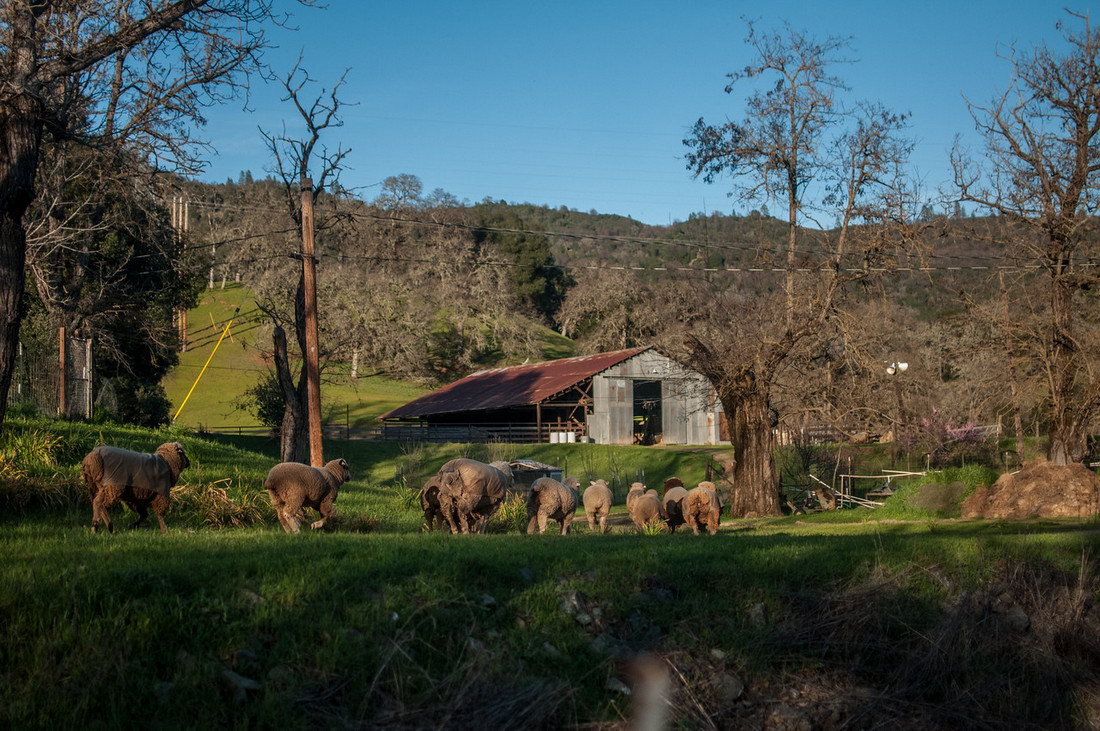
Carrie and I chat as we walk the land, she explains the history of the place. John has owned the land for 15 years, keeping cattle and a 40-acre walnut orchard, and it’s just in the last three years that Carrie and the sheep have moved in. To date, their flocks include 20 head of Angus cattle, 35 chickens, 44 merino sheep, 11 lambs, and 1 Cormo cross sheep. As we circle back to the house, a tiny sheep with a bad leg bleats out from a pen. Carrie picks him up and bottle feeds him. I’m struck by her tenderness and familiarity with the babe. She explains that as a midwife for 40 years, she came to the tending and breeding of sheep naturally. I ask her about the sheep’s birthing process, and she says she just tries to get out of the way as much as possible. “They know what they’re doing!” she explains.
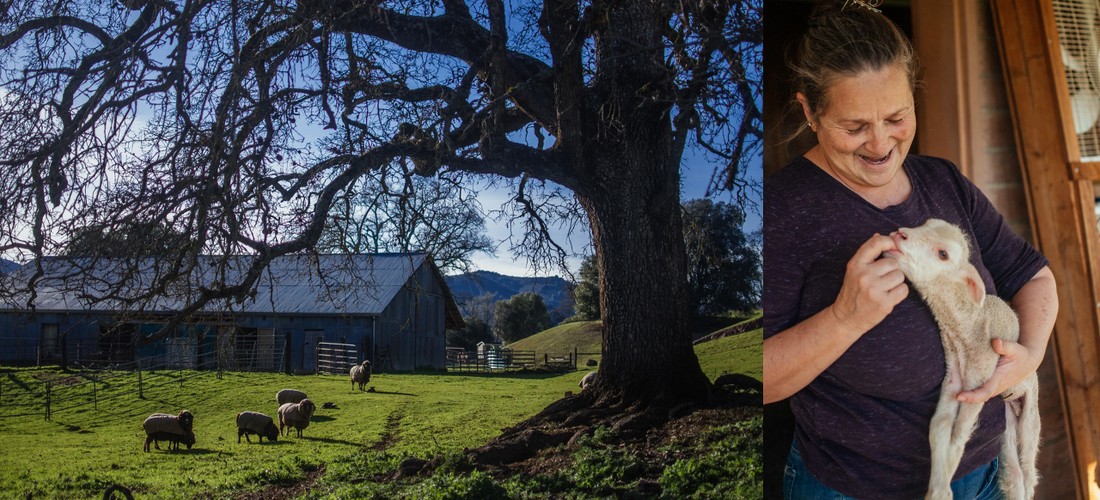
John is stoic, kind, and quiet, but present for all of our time in the field. I’m taken by both of their demeanors and the kindness they radiate. After a few hours of visiting and taking portraits of the land and animals, it’s not until I am giving my thanks for their hospitality and turn to leave when I feel a broad, gentle hand on my shoulder.
“So!” John exclaims, “What are the young people doing these days? What do they even care about?” Startled, I pivot back to face John with a blank face and an inability to answer the question. The question leads us to two more hours of talking at the living room table, about their tales of volunteers and WWOOFers who arrive to help out on the farm but don’t know how to use shovels or have a clue how to chop wood. “It’s an entire generation of people just going for the money. They have no idea how to use their hands or their bodies.” John says, saturated in disbelief.
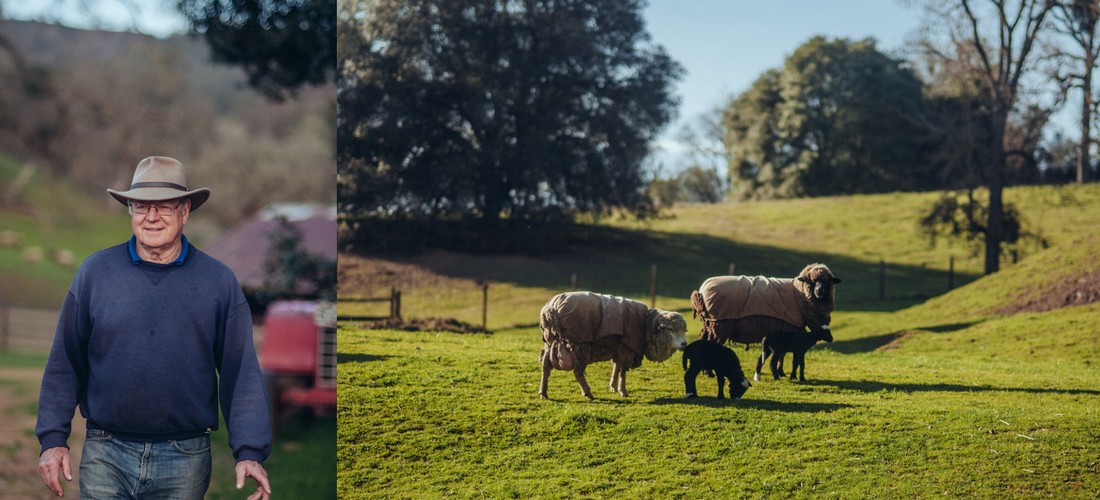
Remarkably, Carrie and John do all the farm maintenance and animal raising on their own. They are driven by their commitment to the community and the land. Carrie says, “I think it’s important to have things more local, given the world’s situation. Most of our clothes are made overseas and nobody knows how to spin or weave anymore. If things all fall apart, we are going to be naked! I think it’s important to retain that knowledge and skill base in our individual communities.”
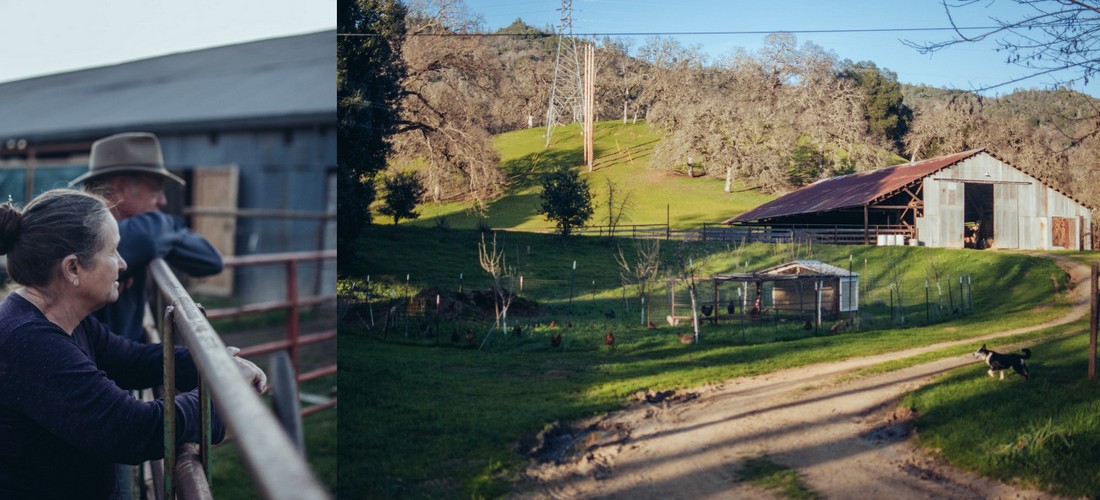
Both stewards of traditional knowledge, and pioneers in the future of land management, Carrie and John are uniquely positioned to bring their farm into a Carbon Farm Plan while still retaining the agricultural heritage of their predecessors. As participants in Fibershed’s Climate Beneficial Wool program, they practice integrated crop and livestock systems management and are actively planning out new steps to take in order to attain optimal nutrient cycling on their farm. By rotating the sheep through their walnut orchards instead of mowing, they decrease fossil fuel emissions from a tractor plus increase carbon sequestration, soil fertility, and water retention, all while growing more diversified agricultural products per acre of farmland. They are in the best of both worlds situation, able to use the know-how of many generations’ agricultural traditions before them, while also taking steps to employ carbon farming and new, innovative farming techniques. This whole-systems approach, and drive to lay the path to climate change mitigation, reflects the dedication to a healthy life, environment, and future that colors Carrie and John’s approach to life and farming.
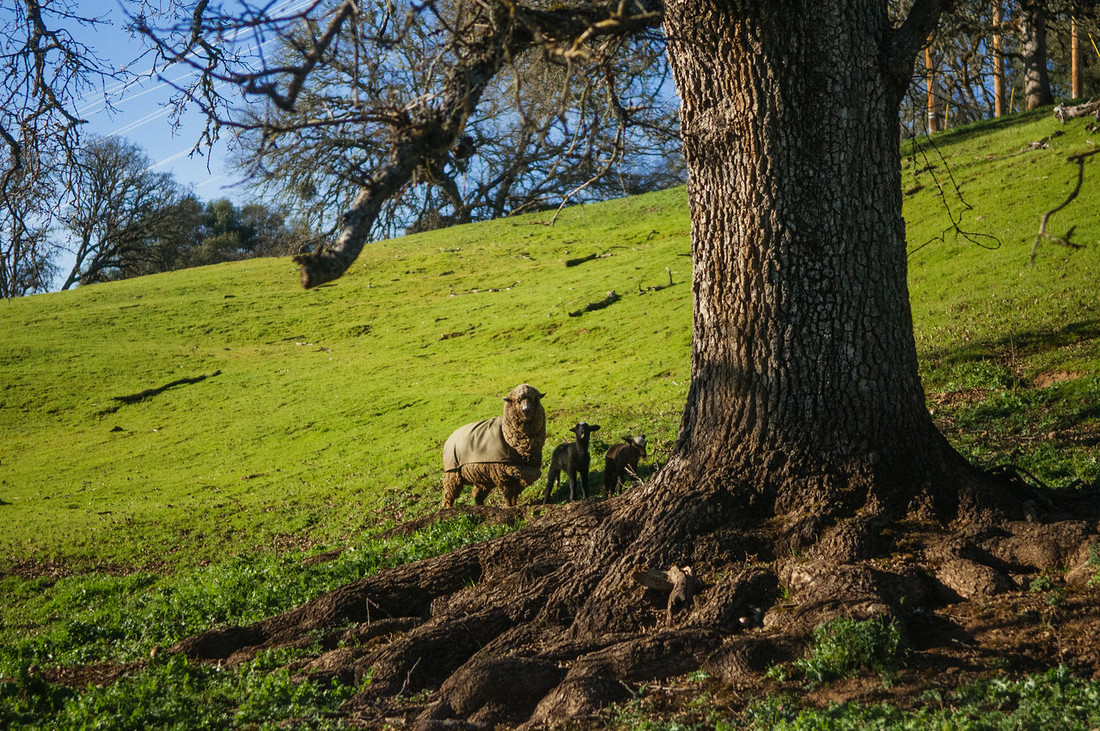
I had the honor of returning to Kirabo Pastures on May 6th, for John and Carrie’s wedding and handfasting ceremony. Carrie sewed her own gold silk dress and with the help of Theresa Markwood (Tree House Felt) and Nancy Finn (Rainbow Dyeworks) made matching felt vests for her and John from their own merino sheep’s wool. The ceremony was intimate, soulful, and a sincere blessing for the earth. In exchange for photography, John and Carrie offered me some of their wool and fleece. I can say it’s some of the best legendary merino wool in all the land. I’ll be returning for more.

You can find Kirabo Pastures products on their website, at the Mendocino County Fair, and the Fibershed Outlet at the farmer’s markets in North Oakland (Temescal) and Point Reyes Station.
Learn more about fiber systems that harmonize our carbon cycle at the Climate Beneficial Fashion Gala on September 23rd, 2017.
